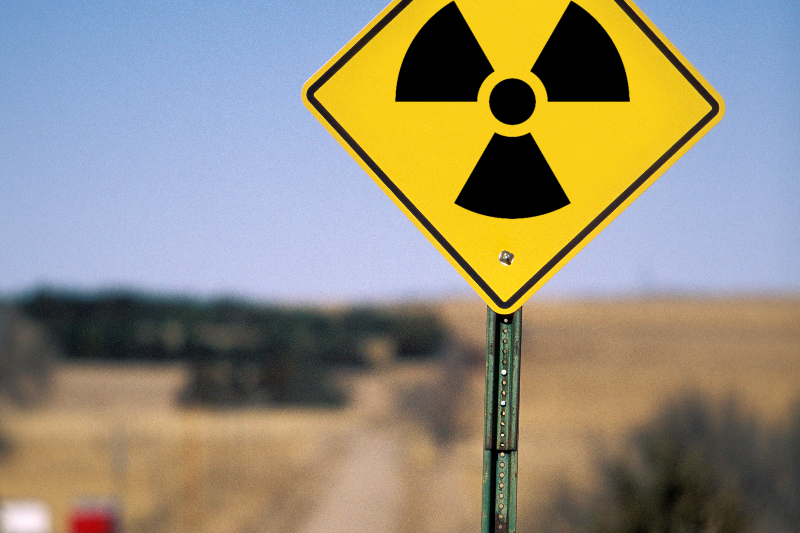AUSTRALIA
Debate escalates over controversial nuclear waste storage site
- Michele Madigan
- 15 March 2022
The long conflict between the federal government plan for a national radioactive waste facility in South Australia and the opponents of the plan has continued to escalate in the past months. On 19 November, Kimba on SA’s Eyre Peninsula was declared South Australia’s Agricultural Town of the Year. Notwithstanding this significant honour, on 29 November the federal Minister for Resources Keith Pitt finally made the formal declaration that Napandee in the Kimba district was the chosen site for the proposed federal radioactive waste dump.

With just 4.5 per cent of South Australia as arable farming, the Napandee site is on premier farming country. The Barngarla peoples are the Traditional Owners of the area.
The federal government plan is for two adjacent facilities: one for low-level radioactive waste and the other for long-lived intermediate waste (ILW) from Australian Nuclear Science and Technology Organisation (ANSTO). It was quite extraordinary that when interviewed then by SA ABC radio Minister Pitt said only that the facility would be used ‘for low level waste.’
In addition to the ILW already at ANSTO will be the latest shipment of two tonnes of reprocessed nuclear waste from the United Kingdom to Australia. The shipment consists of four 500kg canisters held inside a forged steel container called a TN-81.
Since the late 1990s, the supposed needs of nuclear medicine have always been promoted as key in successive government claims for hosting the nation’s radioactive waste in what understandably might be an otherwise unpalatable addition to any community. Throughout 2021, in the face of opposition, Resources Minister Keith Pitt occasionally emerged to make exaggerated claims of the necessity of the dump for the future of nuclear medicine in Australia.
In this debate around nuclear medicine, it is essential to present up-to-date facts. Nuclear expert Dr Jim Green addressed relevant facts in his paper, Nuclear waste and nuclear medicine in Australia, ‘…According to Medicare figures, nuclear medicine represents less than three percent of medical imaging. Nuclear medicine should not be confused with X-rays using iodine contrast, radiotherapy or chemotherapy, which are used much more commonly used…Nuclear medicine typically uses short-lived radioisotopes and the waste does not require special handling after a short period of radioactivity…’
'It would be far safer, cheaper and completely possible to keep the long lived intermediate level waste at ANSTO until a required "world’s best practice" underground site is identified and built.'
For decades, ANSTO has presented the argument that there's no more room for the storage of their own nuclear waste manufactured on site at their Lucas Heights facility. This has been supported by various governments as necessitating the creation of a federal waste facility elsewhere.
However in the 2020 Senate Inquiry, the CEO of the federal nuclear regulator ARPANSA confirmed ANSTO has the ability to manage the waste onsite ‘for decades to come.’
The significant 2021-22 federal budget allocation of $59.8m to ANSTO for building expansion provided a forum for nuclear experts to advise government in the resultant September Public Works Committee hearings. Senator Hughes’ request to explain why Sydney is seen as a safer option for storing its nuclear waste ‘than a far less densely populated area’ gave Dr Margaret Beavis from the Medical Association for Prevention of War, a chance to make a crucial point in the debate:
‘I think the expertise and security at ANSTO is far greater. I also think the risks from this waste pale into insignificance compared to the risks of the nuclear reactor. So, if you're going to be keeping one large facility secure, you may as well keep it all there. The regulator has said quite clearly that there's sufficient space at Lucas Heights to store this waste for decades to come. If you've got to look after the reactor-which we absolutely do have to do…’
Throughout the long campaign, Traditional Owners, Barngarla women and men, exhausted by the 25 years it took to successfully establish their native title rights over their traditional areas, have been incredulous at being excluded from the vital site vote.
On 21 December, following the Minister’s official declaration, Chair of the Barngarla Determination Aboriginal Corporation Jason Bilney made the official announcement on State Parliament House steps, of the launch of their court appeal against the federal process which had denied them having a say on their own country.
Bilney faced the media flanked by Craig Wilkins and Barry Wakelin, former Member for Grey and implacable local Kimba opponent to the dump plan. Wilkins as the CEO of CCSA, South Australia’s premier conservation body, the Conservation Council of South Australia took the opportunity to announce their latest report which clearly states, ‘the planned facility is not consistent with international best practice, and waste will be placed in temporary storage without a plan for what happens next.’
In January this year, the Kimba district was affected by floods causing widespread damage to roads and infrastructure. And in February the State Greens initiated Legislative Council debate of opposition to the federal plan concluded with the Greens and Labor opposition in a tied vote with vote forcibly resolved by the Liberal Speaker.
The question remains: what are the requirements for this plan to go ahead? An historic hurdle is that the former Olsen Liberal Government passed legislation to prevent radioactive waste being brought into the state. This particular state legislation prohibited the introduction of the higher level waste ILW. Later, the Rann Labor government raised the threshold to prohibit the importation of any national radioactive waste. Thus the State Parliament must conduct a public parliamentary inquiry.
Overriding this South Australian legislation is another obstacle the federal government must deal with to achieve the planned facility. As well, the Barngarla court case is in train, unlikely to be concluded before the federal election. The strong No Rad Waste opposition continues on many levels in Kimba and with their colleagues throughout Eyre Peninsula. The SA State election (on 19 March) is imminent. The regulator ARPANSA must enter into the licensing process of the project. The federal government has named ARWA Australian Radioactive Waste Agency as the department which has carriage of the nuclear facility plan; legislation must be passed for it to become an independent body.
However more than any of the serious domestic hurdles, recent weeks have brought home quite starkly the dangers of nuclear projects including this one. The Chernobyl site was among the first Ukrainian areas to be captured by invading Russian forces. The Russian seizure of Europe’s largest nuclear plant Zaporizhzhia is another cause for alarm.
The present government plan for Australia’s long-lived intermediate level waste means ongoing transportation for the 1700 kms from its present storage place in Lucas Heights, to be stored above ground for the next one hundred years. There is no dispute that this ILW is toxic and dangerous for an unimaginable 10,000 years. At least two nuclear engineers including Alan Parkinson have pointed out the dangers of this plan open as it is to terrorist attacks in this uncertain world.
It would be far safer, cheaper and completely possible to keep the long lived intermediate level waste at ANSTO until a required ‘world’s best practice’ underground site is identified and built. Whichever party is successful in the coming federal elections, it is to be hoped good sense prevails in this crucial national issue.
For further information, visit Nuclear Free Campaign.
 Michele Madigan is a Sister of St Joseph who has spent over 40 years working with Aboriginal people in remote areas of SA, in Adelaide and in country SA. Her work has included advocacy and support for senior Aboriginal women of Coober Pedy in their successful 1998-2004 campaign against the proposed national radioactive dump.
Michele Madigan is a Sister of St Joseph who has spent over 40 years working with Aboriginal people in remote areas of SA, in Adelaide and in country SA. Her work has included advocacy and support for senior Aboriginal women of Coober Pedy in their successful 1998-2004 campaign against the proposed national radioactive dump.
No comments:
Post a Comment